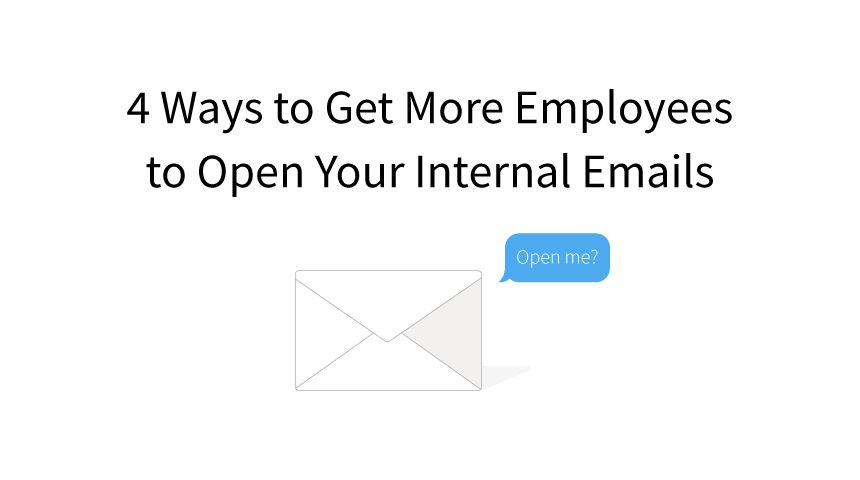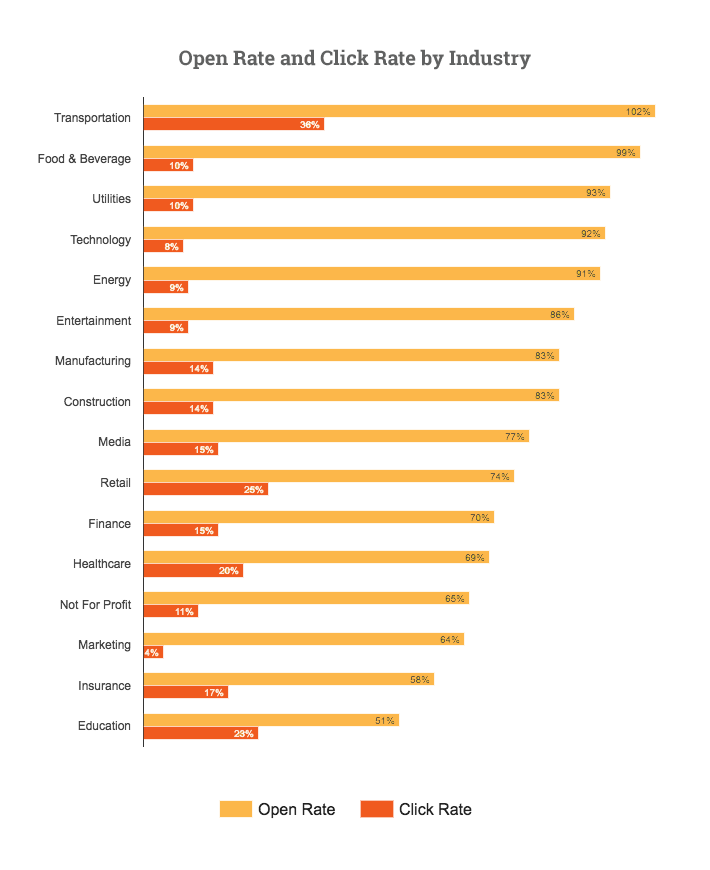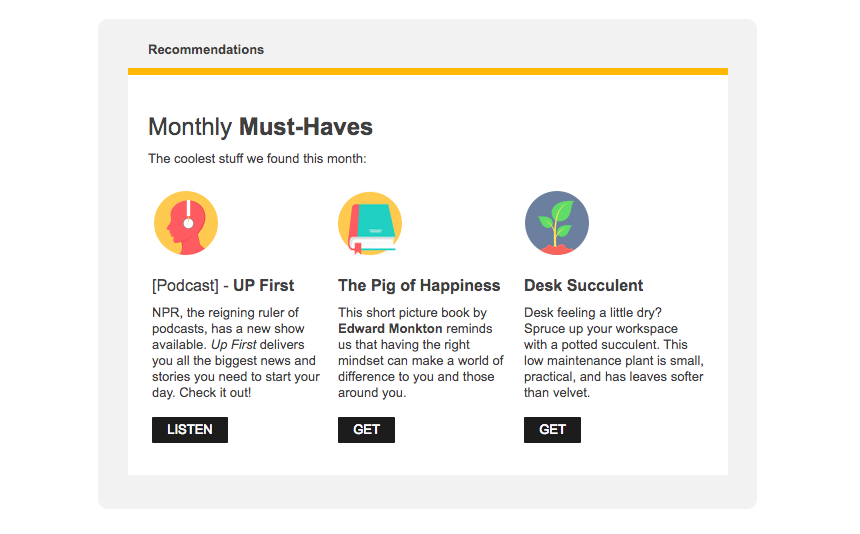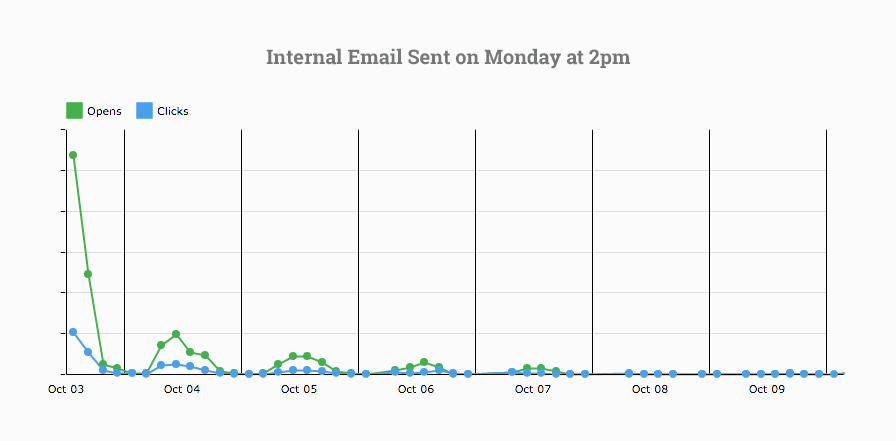4 Ways to Get More Employees to Open Your Internal Emails

You’re here because no one is opening your employee emails.
Or maybe some employees are, but not enough.
That’s a problem.
Key messages could be getting lost. Employees might be uninformed. And leadership will want to know what the deal is.
Before you go on a campaign to convince everyone that email is the problem here, and the company should just get bio-implants for all of your employees so they have to get the message, let’s see if we can help you out and increase your open rate.
No creepy bio-tech required.
Let’s start with the basics…
What is a good employee email open rate?
We get asked this daily.
And no one ever likes the answer.
It depends.
It depends on:
what kind of emails you’re sending (alerts vs. newsletters, and so on)
your industry
your unique company culture
your company’s organizational structure
Employee email open rates vary across industries, organizations, and list sizes, so there isn’t really an objective ‘good’ benchmark.
Except for a 100% open rate. That would definitely be good. But that’s beside the point.
We did some research on internal email benchmarks by industry and list size, and this is what we found: most industries sit between an open rate of 50% – 94% for internal emails.

It’s quite the range, as you can see. That’s why, when you are trying to figure out what a good open rate is for your organization, your benchmarks are best.
How to set your own internal email benchmarks
It’s actually easier than you might think to track and set your own internal email benchmarks.
Start by tracking and gathering your open rate data for multiple emails (the more the better). Then see what the average open rate is.
Try some of the tactics listed below to boost that open rate and see how much you can improve.
If your open rate dips, pay attention and figure out why. Keep optimizing until you get the open rate as high as you can.
Not sure where to start?
The first thing you need to evaluate if you want to improve the open rate of your internal emails is your subject line.
Your employee emails need a great subject line
Your subject line has one job—get people to open the email.
That’s it.
If you’re using something like “Acme Corp’s June 21st Newsletter Update” as your subject line and employees aren’t opening, try something a little more creative.
Your subject line has the most important job out of all the other words in your email. So give it some real thought and effort.
According to our research, the most successful subject lines are:
Short and sweet
Highlight a benefit or reason to open
Personal
Straightforward
Emotional

Go on and experiment. You might be surprised by what works for your audience.
Earn the respect and trust of your audience
If you’ve been sending out emails that people aren’t interested in for too long, you’ve probably already alienated your audience.
But it’s okay. You can turn it around by being real with your readers. Tell them you’re going to do better to bring them better content. Ask for suggestions. Be open to feedback and act on it.
A really good way to get people to open your email is to get them invested in the content.
Are you going to take their suggestions to heart? Are you going to provide them with quality content they want and need? Are you going to put the effort in to make your email a trusted source of information?
Stop broadcasting information nobody wants and start a conversation. Or, at the very least, broadcast useful, positive, fun-to-hear content.

You’re communicating with real people who have feelings and thoughts. So make sure your emails take their experience, feedback, and perspective into account.
If it’s too late, and you’ve already alienated your readers and are struggling to get them back—start fresh. Relaunch your newsletter with a new voice, new theme, and from a new sender. This can help you build a better reputation with your readers and become a trusted source of information.
Provide real value
What’s in it for employees? What do they get if they open your email?
Interesting information that helps them with their jobs?
Or just a wall of text from an out-of-touch CEO and a bunch of buzz-wordy, jargon-packed promo material?
If you want employees to do a thing (like open your email) you have to give them a reason to.
Ask yourself what purpose your newsletter actually serves. If you’re filling the newsletter up with information that doesn’t impact or interest your readers, why should they care?
Spicing things up with content blocks that employees actually care about can definitely help.
Provide clear value and make your emails useful, and you will see people opening your emails in no time.
Timing is everything
You can’t help if someone is in a meeting or on vacation when you send an email, but you can work out when the best time of day and best day of week is to send out internal emails.
Did you know that most email opens happen within the first hour of the email arriving in an inbox?

That being said, if you send at a bad time, while other daily tasks are competing for employees’ attention, they may be too busy to open it. If they are too busy, your email may get buried under a pile of other emails stacking up in their inbox.
Timing your emails thoughtfully is a good way to show that you are cognizant of your employees’ needs, time, and workflow, all while increasing opens, clicks, and engagement.
Internal communicators ask us all the time when the best time to send internal email is, and I will tell you what I told them:
It depends.
I know, I know. Again, not the answer you are looking for.
You can sift through as much external data as you want, but the truth about when the best time to send internal email can only be revealed in your data.
Track your emails, look at your open rates and see if there are any correlations between more or less opens during certain times of day or days of the week, and you will be well on your way to finding the best time to send your internal emails.
Improve your employee email open rates with Staffbase Email
If you’re not tracking your open rate or email metrics yet, we can show you how. It’s super easy.
One of our friendly team members would be happy to set you up with a personalized demo of Staffbase Email today.









